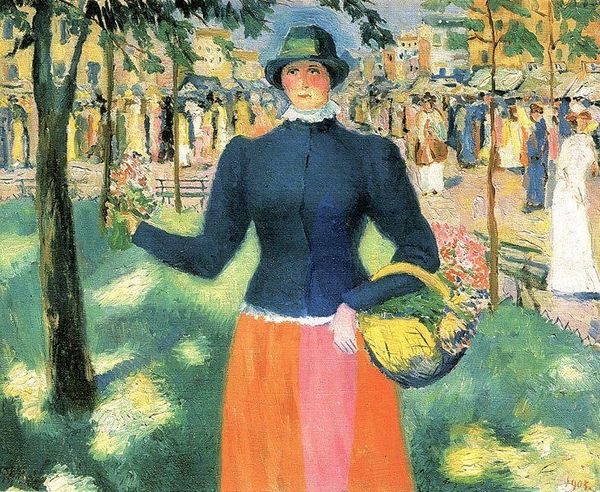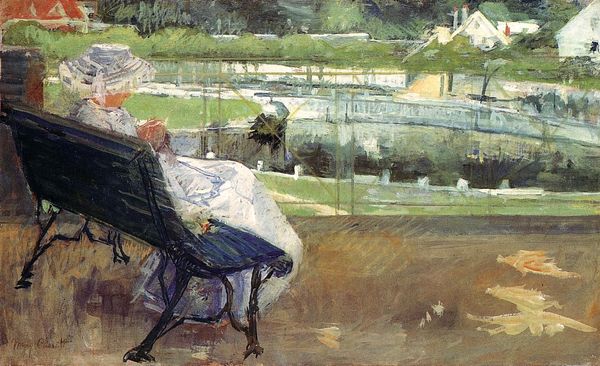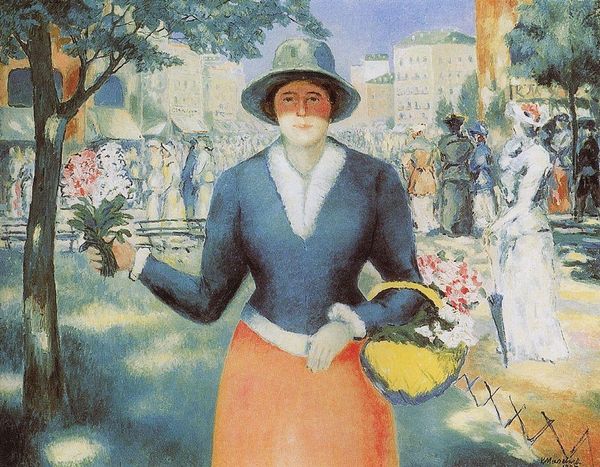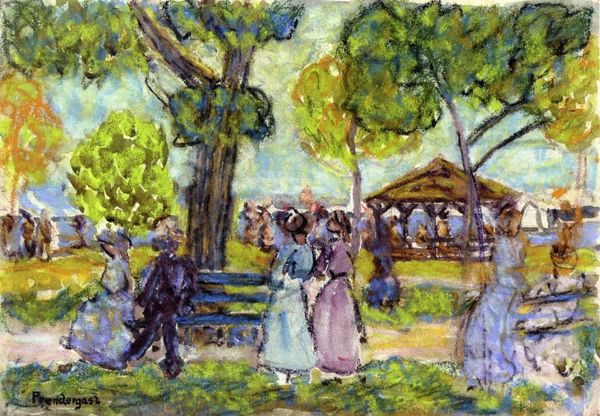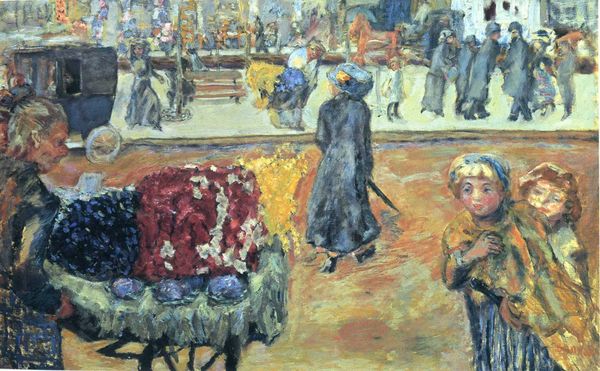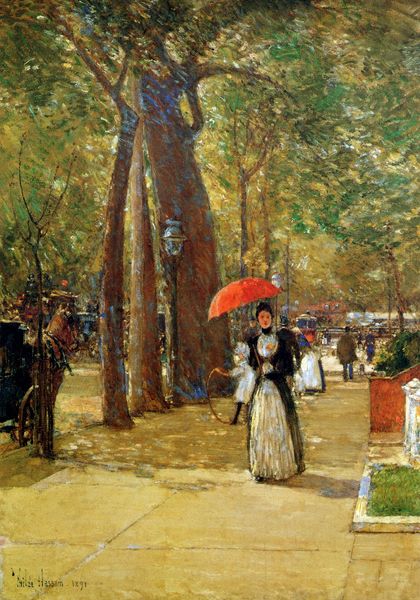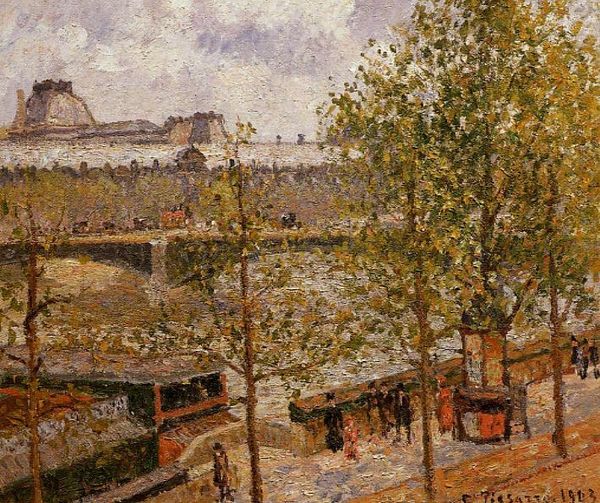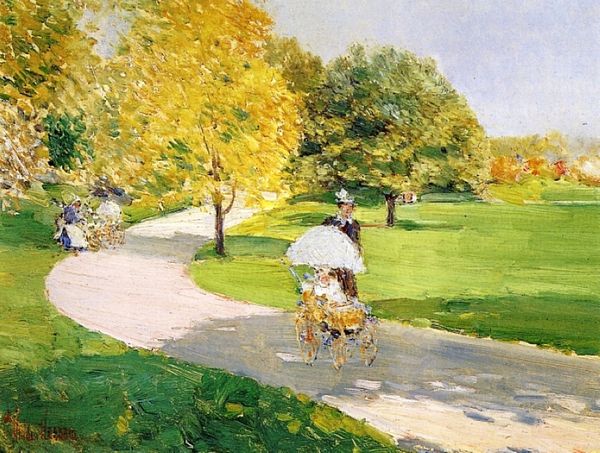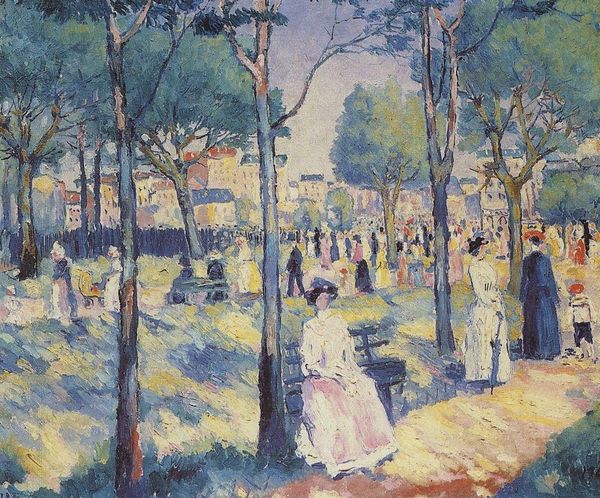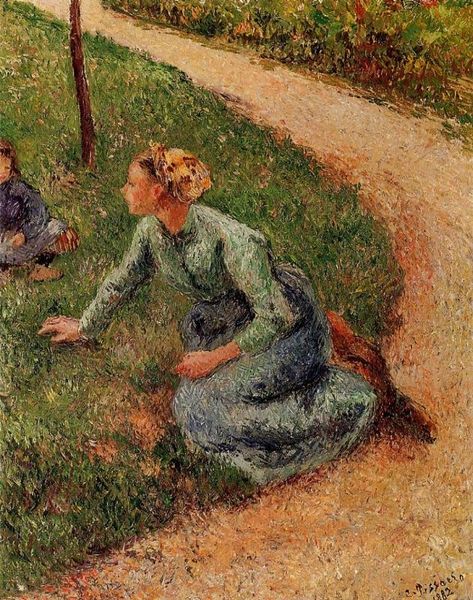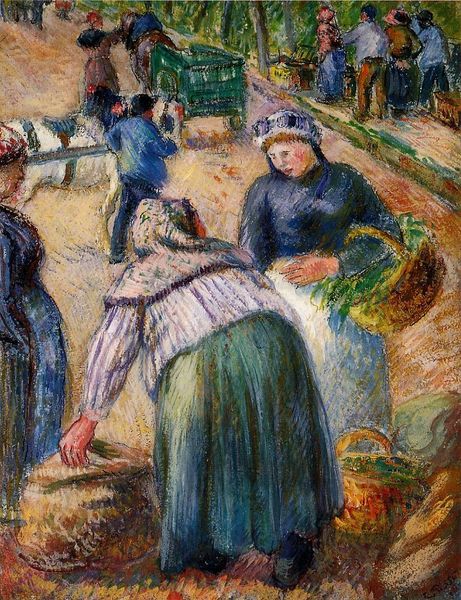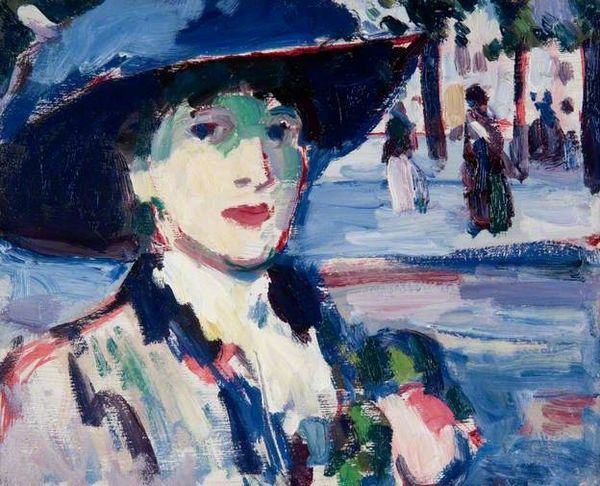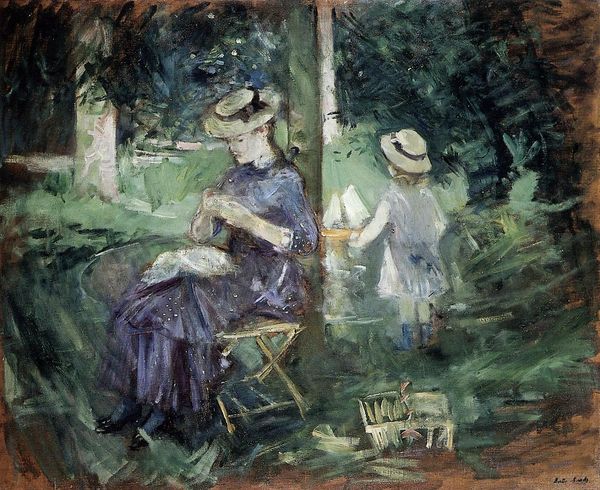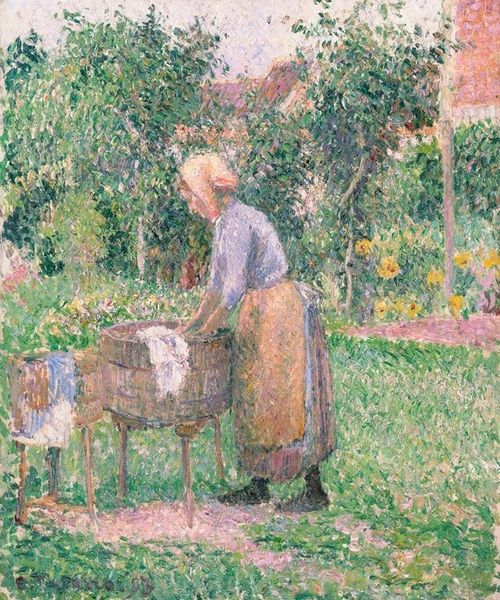
Dimensions: 56 x 66 cm
Copyright: Public domain
Curator: Kazimir Malevich’s “Boulevard,” painted in 1930, captures a slice of city life with some unusual artistic choices. What are your first impressions? Editor: There's a definite tension here. It's undeniably cheerful in its palette, almost naive. The bold, unmodulated colors—that sunshine yellow of the pram—feel optimistic, but the composition, specifically how flattened and crammed the crowd appears, it brings this weird disharmony into what would otherwize be joyful. Curator: The flattened space is interesting, especially given Malevich’s Suprematist focus on pure feeling. One can also argue that by that point, Malevich found himself increasingly under pressure to conform to the rising Socialist Realist aesthetic of the Soviet Union. Do you think that there's a narrative aspect in relation to class visible within the piece? Editor: Absolutely. The formal aspects seem inextricably linked to social messaging. The mother and pram almost function as a visual barrier, delineating an intimate foreground from a more impersonal, communal background. Is it really Malevich that makes this division? Curator: Indeed. His shift from radical abstraction toward figuration represents not only a response to external political forces, but an evolving inquiry into the artist's role within a society undergoing dramatic transformation. You can see in Malevich's production, the relationship with folk art practices that was valued within the USSR, in terms of the democratization of artistic practices in order to represent labour forces and quotidian social gatherings. The crude style serves as a symbolic commitment. Editor: Perhaps. Yet, formally, that very crudeness, as you say, is the real site of interest. The deliberately simplified forms allow the colour relationships—that bright yellow against the subdued greens, for instance—to speak volumes. I read it as the colour being responsible of drawing us into its domestic narrative. It feels very present to me. Curator: Ultimately, it becomes impossible to neatly extract Malevich's "Boulevard" from the web of socio-political complexities of its time. Its value isn’t just about what the picture presents in terms of imagery and content. Its narrative function lies beyond. Editor: Quite, the materiality and colour work together and generate so many alternative readings in order to experience it fully.
Comments
No comments
Be the first to comment and join the conversation on the ultimate creative platform.
